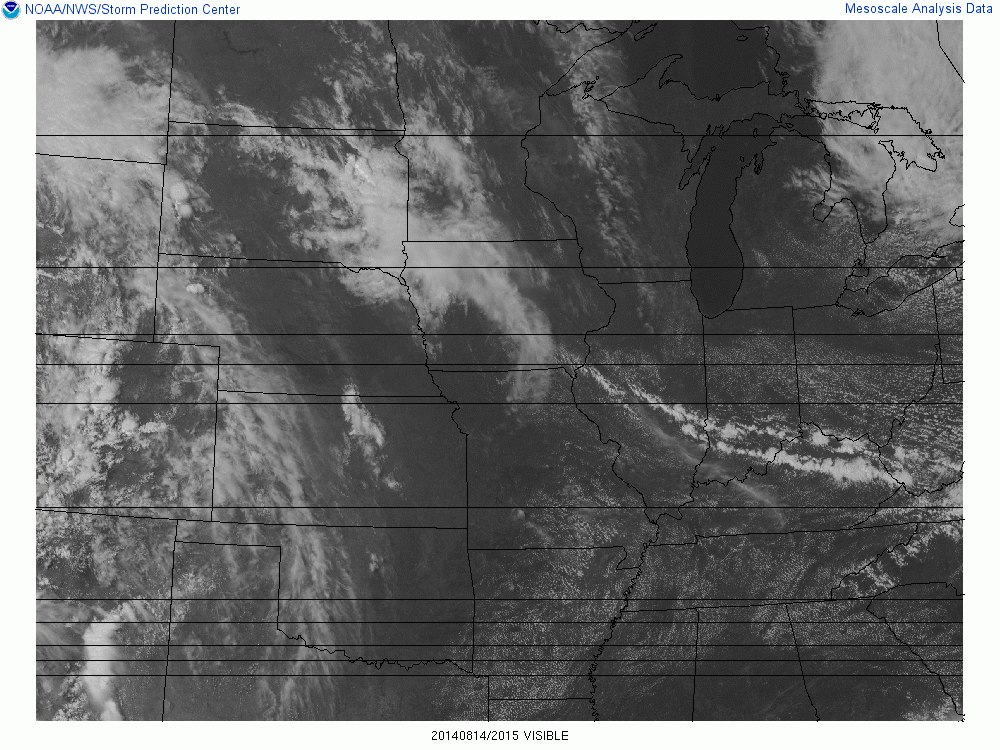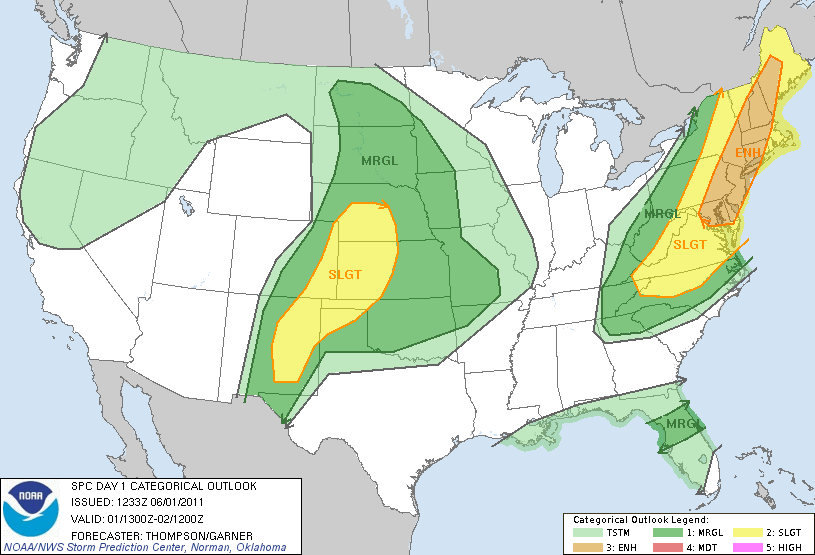Midday Sunday
What a night! The first midwestern system did arrive a little early with some strong winds, some scattered minor damage, lots of lightning and a very much needed significant rainfall. Then, the second system arrived right on schedule around 5 A.M with a repeat of the first system. Storms are now moving rapidly away and skies should slowly clear this afternoon. Seasonably cool, dry weather should be the weather pattern through much of the upcoming week.
Note: a Tornado Watch covers much of Kentucky south and east of Louisville. However, as of 1:15 this afternoon, the line of potentially damaging thunderstorms has moved southeast of a line from Lexington to Bowling Green. So, no one within a 50-mile radius of Louisville is in any danger from thunderstorms this afternoon.
Just what is a severe Thunderstorm?
The National Weather Service defines a severe thunderstorm as having large hail, at least 3/4 inches (0.75 inches) in diameter, and/or damaging winds, at least 58 mph, or 50 knots
58 mph winds are really strong. They do lots of damage. They are pretty rare around here. Last night’s two rounds of thunderstorms generated plenty of warnings but not a whole lot of damage. (There’s an old story to answer the question posed by this article -“If the whole neighborhood has several large limbs and trees down, but my property is untouched, it was a strong storm. However if my neighborhood has no damage, but I’ve got a big limb down, it was a severe storm.”)
There’s an old saying in the weather business that states a few trees down DOES NOT a severe thunderstorm make! Very true. Thunderstorm (and non-thunderstorm) winds can do tree (and other) damage with wind speeds as low as 30-35 mph. As the winds increase so does the ability to do damage. For instance, a wind gust of 60 mph has 44% MORE FORCE to work with compared to a 50 mph gust.
I looked at last night’s data from area airports. The HIGHEST wind gusts recorded were at Ft. Knox – 32 mph. Lexington, both Louisville airports, Bowling Green, Huntingburg (IN), and Frankfort had top wind gusts in the 20’s. Louisville’s Standiford Field’s top gust was 23 mph (at 5 P.M., when the skies were sunny).
I also checked the Kentucky Mesonet. The highest gust around the state was in Bullitt County with a gust to 53.4 mph. Hardin, Shelby and Taylor Counties all measured around 49 mph while just about everyone else was in the 30’s or lower. Now one wind, measured at a single site, does not mean it has to be the highest in that county. Thunderstorm wind gusts can vary quite a bit over short distances. Case in point being Franklin County. The airport’s top gusts overnight were in the mid 20’s (they’ve had a higher gust this morning) while the mesonet station reached 41.3 mph.
But, when you look at several dozen reports and the large majority only saw max gusts in the 20’s and 30’s, you have to believe that the outliers in Bullitt, Shelby and Oldham Cos. were probably pretty close to the top of nature’s production overnight. It’s quite likely parts of Bullitt County reached the magic 58 mph target. Possibly parts of Shelby and Oldham also reached it.
So, by the actual “ground truth” of the raw data, our region did not have any severe thunderstorms last night. But, based on interpretation of the data distribution, it’s likely a few spots(but only a few) did reach the 58 mph hour criteria. There were plenty of Warnings issued, there was some damage, but did we have any “severe” storms based on the official definition? Well, as the little story at the beginning of the essay illustrates, It’s all in YOUR perception!




